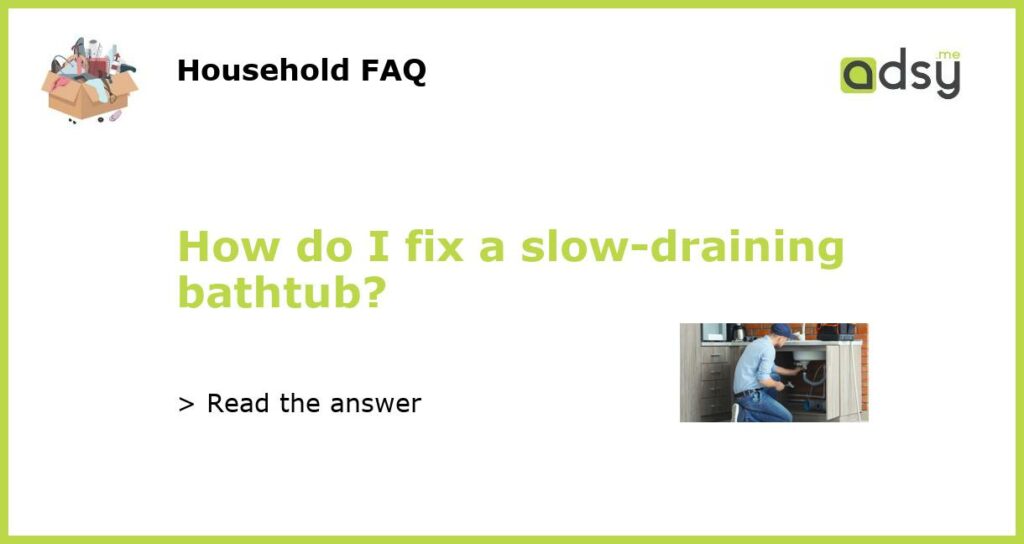Common Causes of a Slow-Draining Bathtub
A slow-draining bathtub can be a frustrating problem to deal with. Not only does it make it difficult to take a relaxing bath, but it can also be a sign of a more serious plumbing issue. Before you can fix a slow-draining bathtub, it’s important to understand the common causes of this problem.
One common cause of a slow-draining bathtub is a buildup of hair and soap residue in the drain. Over time, these materials can accumulate and create a blockage, preventing water from flowing freely down the drain. Another common cause is a clogged or partially blocked drain pipe, which can be caused by a variety of materials such as dirt, debris, or mineral deposits.
Tools and Supplies You’ll Need
Before you can begin fixing a slow-draining bathtub, you’ll need to gather some tools and supplies. Here are the items you’ll need:
- A plunger
- A drain snake or auger
- A bucket
- A pair of rubber gloves
- A pliers
- A wrench
- Vinegar
- Baking soda
- Hot water
Step-By-Step Guide to Fixing a Slow-Draining Bathtub
Now that you have your tools and supplies ready, here’s a step-by-step guide to fixing a slow-draining bathtub:
- Remove the drain cover by unscrewing it with a screwdriver or using a pair of pliers.
- Use a plunger to create a tight seal around the drain and plunge vigorously for a few minutes. This can help dislodge any blockages in the drain pipe.
- If plunging doesn’t solve the problem, insert a drain snake or auger into the drain and rotate it to break up any clogs. Pull out any debris that comes up with the auger.
- Pour a mixture of vinegar and baking soda down the drain. Let it sit for a few minutes to dissolve any remaining debris or mineral deposits. Then, flush the drain with hot water.
- Replace the drain cover and test the bathtub to ensure that it’s draining properly.
When to Call a Professional
While fixing a slow-draining bathtub can often be a DIY project, there are some situations where it’s best to call a professional plumber. If you’ve tried the steps above and the bathtub is still draining slowly, or if you suspect that the problem is more complex, it’s best to leave it to the experts. A professional plumber will have the knowledge and tools to diagnose and fix the problem correctly.
Preventing Future Slow Drains
After fixing a slow-draining bathtub, it’s important to take steps to prevent future clogs and blockages. Here are some tips to keep your drains flowing freely:
- Use a drain cover or strainer to catch hair and other debris before it goes down the drain.
- Avoid pouring grease or oil down the drain, as they can solidify and cause blockages.
- Flush your drains regularly with hot water and vinegar to help dissolve any buildup.
- Avoid using chemical drain cleaners, as they can damage your pipes over time.
- If you notice any signs of a clogged drain, such as slow drainage or gurgling sounds, address it promptly to prevent further issues.

